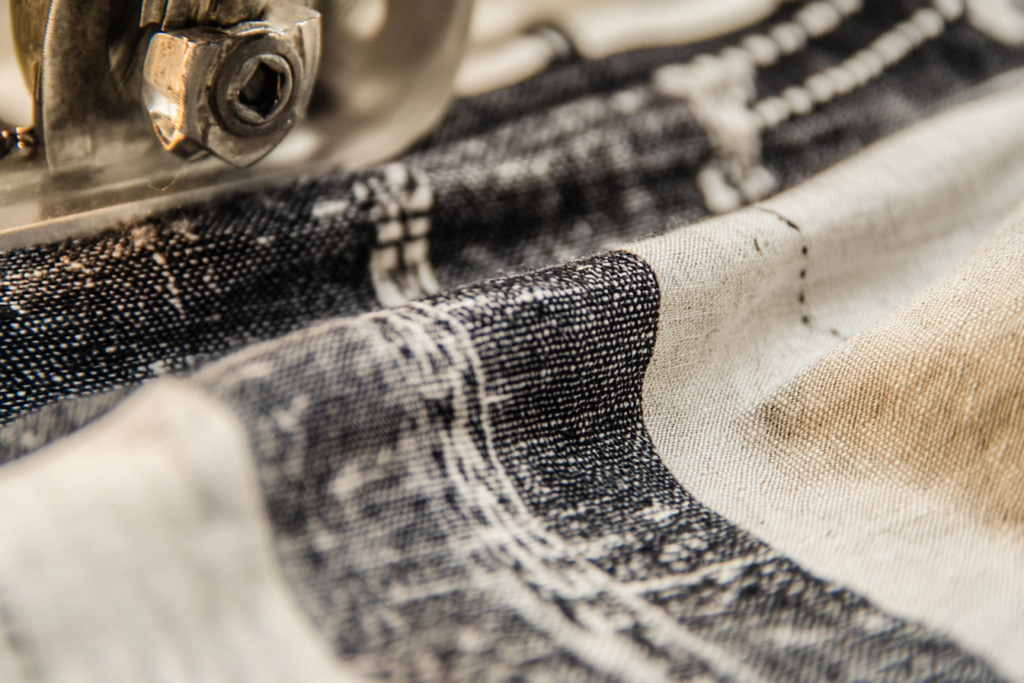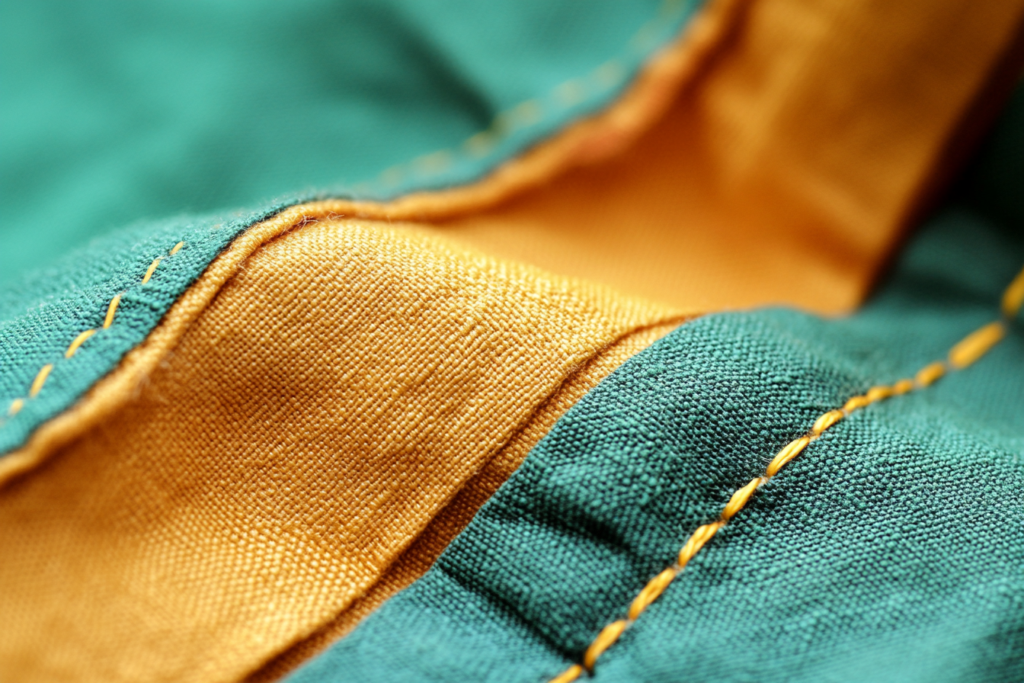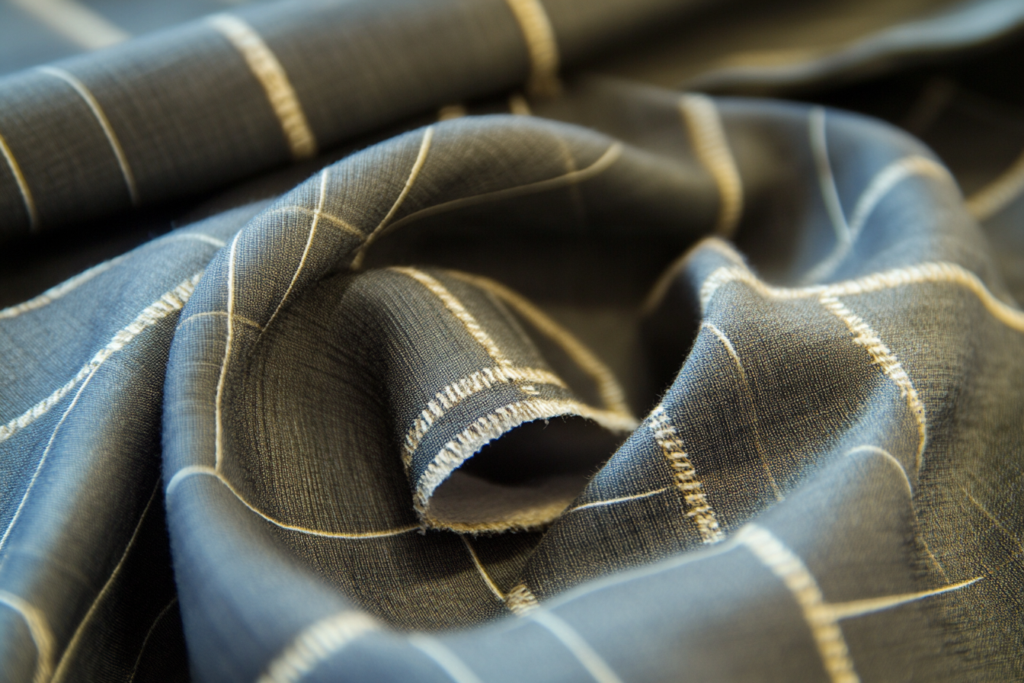Introduction: What is a Drag Line?
A drag line refers to the visible lines or wrinkles that appear on a garment when it doesn’t fit properly. These lines can indicate areas where the garment is either too tight or too loose, causing the fabric to pull or bunch up in certain places. Drag lines are most commonly found in areas like the bust, hips, thighs, or waist. They are a common fit issue that designers and pattern makers aim to address to ensure that clothing fits smoothly on the body.
In some cases, drag lines result from excess fabric in certain areas, while in other cases, they occur when the garment is too tight, causing the fabric to stretch and form wrinkles. Understanding drag lines is essential for garment fitting, as they help identify areas that need adjustment for a better overall look and feel.


Causes of Drag Lines
- Too Tight:
- When a garment is too tight in certain areas, it causes the fabric to stretch and pull. This often results in visible drag lines across the fabric, especially in areas where the garment is restricted, such as around the bust, waist, or hips. Tight-fitting garments like dresses, shirts, and pants are particularly prone to this issue if the measurements aren’t properly accounted for.
- Too Loose:
- On the flip side, when there is too much fabric in a garment, it can also cause drag lines. Excess fabric doesn’t lay flat on the body and instead gathers or folds, creating uneven wrinkles. This is often seen in loose-fitting clothing or garments that are too large for the wearer’s body. In this case, the fabric doesn’t have the proper tension to hang smoothly, leading to wrinkles and creases.
- Incorrect Fabric Choice:
- The type of fabric used can also contribute to drag lines. Stiffer fabrics or those without enough drape may not flow smoothly over the body, leading to wrinkles in areas where the garment is too tight. On the other hand, very soft fabrics may shift or bunch in areas where there is excess material, also resulting in drag lines.
- Improper Pattern Fit:
- Sometimes, drag lines result from poorly drafted patterns that don’t account for the natural shape of the body. Garment patterns need to be adjusted for individual body shapes, and if the pattern doesn’t fit well in certain areas (e.g., the shoulders, bust, or waist), the fabric will pull or fold, causing visible lines.
Where Drag Lines Commonly Appear
- Around the Bust:
- Drag lines are often seen around the bust area in tight-fitting tops, blouses, or dresses. When a garment is too tight around the bust, the fabric pulls and creates drag lines. Alternatively, if the garment is too loose, the fabric may gather in the bust area, causing unwanted wrinkles.
- Waist and Hips:
- In skirts, pants, or dresses, drag lines can appear at the waist or hips, where the garment may be too tight or too loose. This is especially common in trousers or pencil skirts where the fit at the waist may be too snug or too loose, resulting in visible drag lines across the fabric.
- Across the Thighs:
- Drag lines across the thighs are common in pants or skirts that are too tight in this area. The fabric may stretch and pull, creating creases. On the other hand, pants or skirts that are too loose will have excess fabric that causes the fabric to fold in a way that creates drag lines.
- Back and Shoulders:
- Tight-fitting tops or jackets may cause drag lines across the back and shoulder area. If a garment is too small in the shoulder or back, the fabric will pull, causing lines and wrinkles. On the other hand, if the fit is too large, the extra fabric will create folds, leading to visible drag lines.
How to Prevent Drag Lines
- Ensure Proper Fit:
- The most important step in avoiding drag lines is to ensure the garment fits well. This means the garment should neither be too tight nor too loose. Taking accurate body measurements and adjusting the pattern accordingly will help ensure a smooth fit that doesn’t result in pulling or excessive fabric gathering.
- Adjust Patterns for Body Shape:
- Patterns may need to be adjusted to account for body shape. For example, if someone has a larger bust or waist, the pattern may need to be modified to avoid pulling or gathering in these areas. Customizing the fit of the garment during the design or tailoring process will help eliminate the risk of drag lines.
- Use the Right Fabric:
- The choice of fabric plays a significant role in how the garment fits and drapes. Lighter, drapier fabrics tend to flow better over the body and are less likely to create drag lines. Stiffer fabrics should be avoided in areas where movement and flexibility are necessary.
- Proper Tailoring:
- If a garment is already made but has drag lines, taking it to a tailor can help. A skilled tailor can adjust the fit, remove excess fabric, or let out seams to eliminate drag lines and improve the overall fit and appearance.
Conclusion: Understanding and Fixing Drag Lines for Better Fit
Drag lines are a key indicator that a garment doesn’t fit properly, whether it’s too tight or too loose. By understanding the causes of drag lines, you can make informed decisions about adjusting garment patterns, selecting the right fabrics, and achieving a better fit for your clothing. Proper tailoring or design adjustments can ensure a smooth, wrinkle-free appearance and a more comfortable garment overall.



